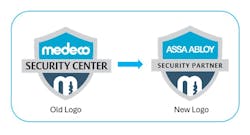The locksmith industry is in the midst of a transition that many industries have, or will be going through. The cause is constantly evolving technology, and it’s important to know that the future of the security industry is similar to any other. The future of the technological landscape rests in addressing the needs of an increasingly connected world.
Before the widespread existence of websites, smartphones and social media, the print media industry was the most common way we all consumed media. Fast forward a decade and all that has changed, the desktop computer became king. But just because a new medium emerges, doesn’t mean the constant push of technological evolution has stopped – there’s always a new paradigm shift on the horizon. According to the Pew Research Center’s analysis, 39 of the top 50 news websites today have more traffic coming from mobile devices than from desktop computers.
All businesses are evolving, and to ensure that we can continue to compete, we must stay on top of new technologies. For this to happen, locksmiths need to be proactive, embrace change, gain knowledge of electronic locks and learn about the role mechanical can have within this new world.
Electronic locks combine the electrified lock, credential reader, door position and request-to-exit switches in one device for simple installation. In doing this, they provide added security, convenience and efficiency. Electronic locks also enable your clients to reduce rekeying costs by issuing electronic credentials such as PIN codes, proximity or smart cards, which can be easily added or deleted.
To accommodate various project requirements, options include standalone and networked wireless or hardwired locks.
Standalone electronic locks provide added security, convenience and efficiency for openings that do not require real-time updates and monitoring. In general, standalone electronic locks are easy to install because they are battery-powered and do not require wiring to the access control system. Manually programmed locks are a good option for openings that do not require frequent updates or audit trails, but they can be retrieved from the lock to show who requests access and when. Updates, such as adding a new user, are made quickly and easily right at the lock.
Networked electronic locks provide increased monitoring, flexibility and control. Hardwired and battery-powered wireless options are available. Updates are made through access control software and transmitted over a network to the lock, eliminating the need to visit each opening. Networked locks monitor the status of an opening and send alerts for abnormal conditions such as a door propped open, tampering or low battery. Features and capabilities depend on the access control system, so it is important to consult the provider to verify what is supported.
With any new technology, there will be questions that follow. Some questions to talk through with clients might include:
How does the client want to manage the user base and openings? Standalone locks are better suited for clients who manage a small number of users and openings, and can visit the lock to make changes and retrieve data. Networked locks are better suited for clients who want the convenience of making changes and retrieving data from a centralized system, and want to receive status updates and alerts.
How important is real-time to the client? If the ability to make immediate changes or receive status alerts has high value to your client, then a networked hardwired or wireless lock with real-time capabilities is typically the best option. Wi-Fi locks are connected to the system over the network, eliminating the need to visit the locks individually, and updates and alerts are typically sent once or twice a day.
How will the client’s needs change over time? How can they maximize their investment? Many clients fear their solution will become obsolete over a short period of time due to rapid changes in technology. Some electronic locks provide clients with the ability to adapt to emerging technologies through open architecture platforms so that it can easily be integrated into virtually any access control system.
Although electronic locks play a larger role in the industry and are a main topic of discussion with locksmiths, mechanical solutions still play a major role today and will in the future as well. By combining your core strength in mechanical hardware with digital, mobile and interconnected electronic solutions, you’ll be able to offer clients a solution that is both strong and adaptable to future technologies.
For example, one part of a building may only need mechanical hardware, but other areas may be best served with key cards and hi-tech methods. Many people have a key chain filled with keys to their home, car and mailbox, among other needs, but those same users access corporate office buildings for work each morning with smartcard credentials. Being well-versed in both solutions will allow you to offer a deeper portfolio of options to your clients.
Being knowledgeable on both mechanical and electronic hardware solutions will help your marketability and keep the locksmith industry evolving to new heights. As many industries have experienced before, the evolution of technology opens up a land of opportunities. You just need to take them!
Minu Youngkin in the Integrator Marketing Manager for Allegion. For more information, visit us.allegion.com.






